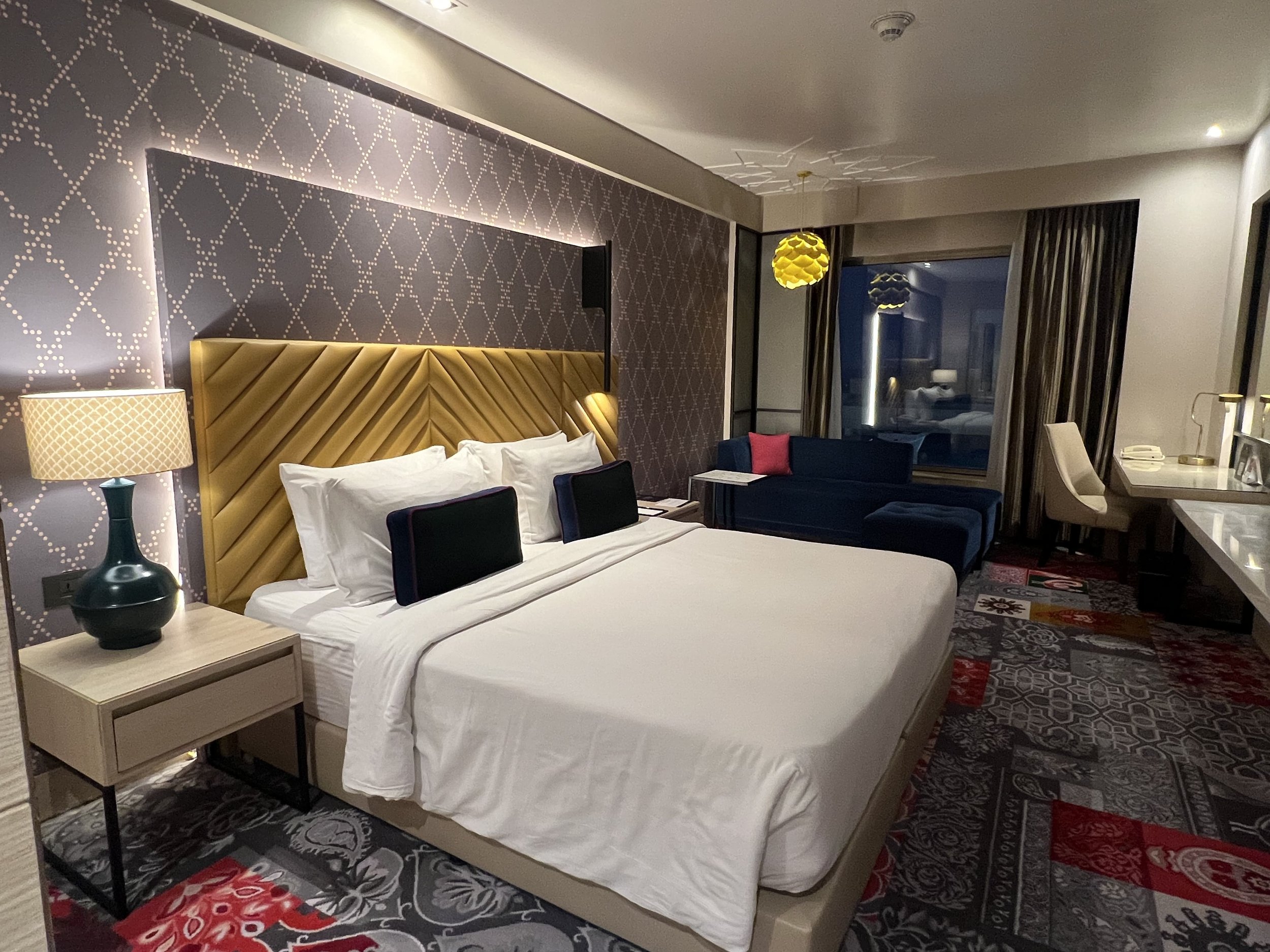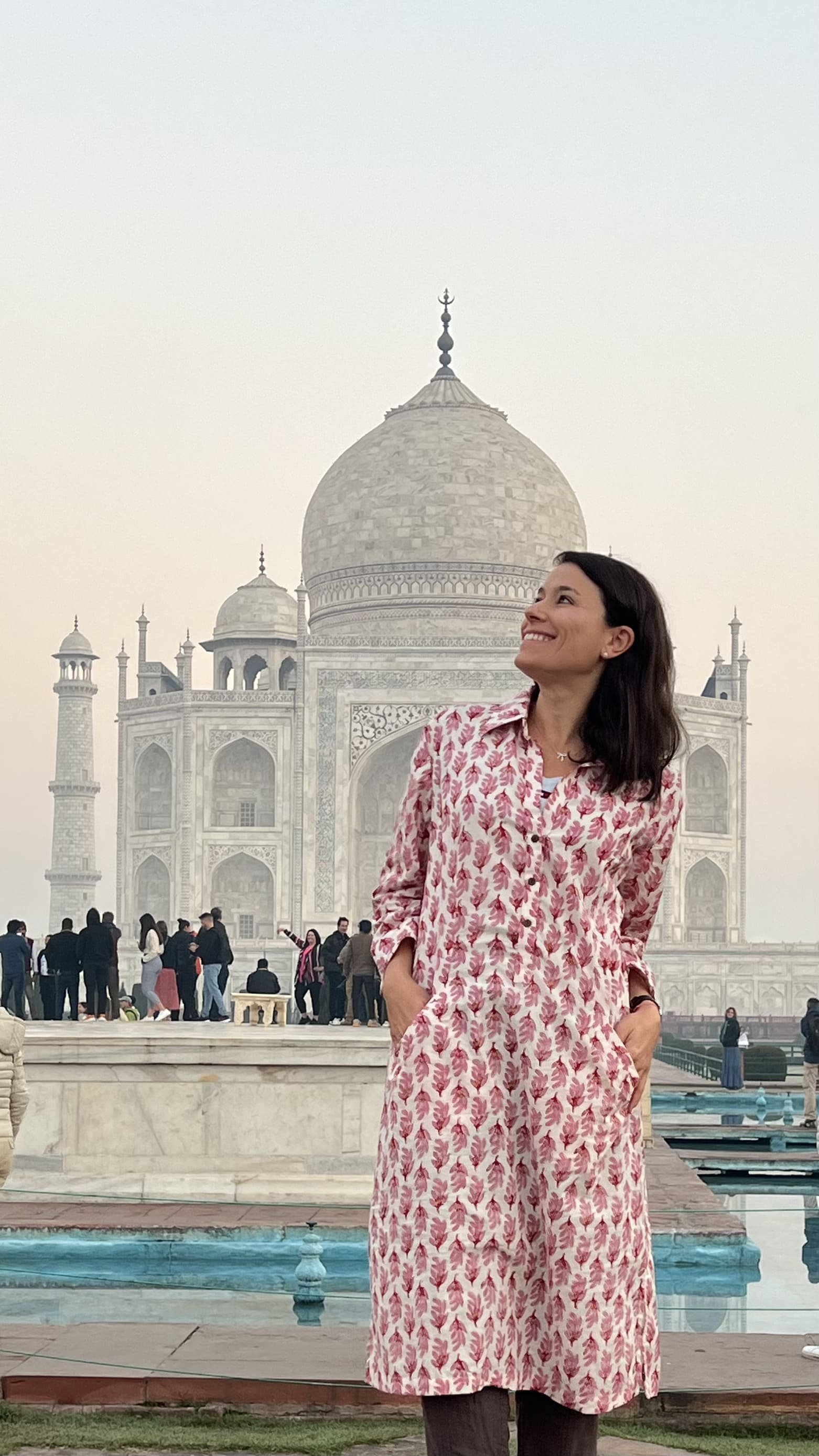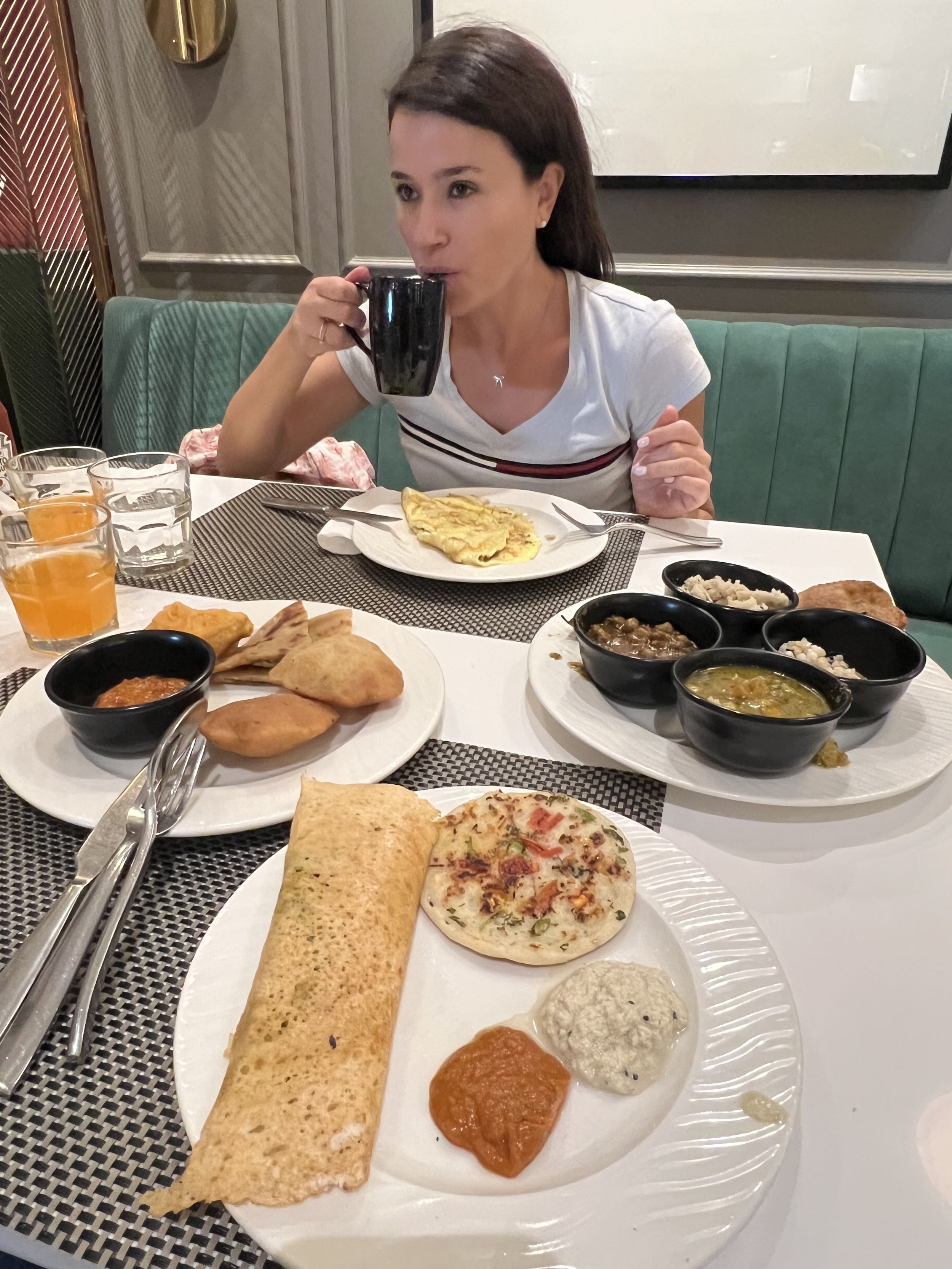Agra
The incomparable Taj MahalAgra was an extraordinary destination. Nothing like seeing the Taj Mahal, with its symmetry and romantic love story.
It is another great Indian city, chaotic with smog, noisy, dirty, labyrinthine and, at the same time, fascinating.
Our hotel was on a main road, opposite the new metro line that will take tourists to its main attraction. The Grand Mercure was a supposed five star but the service was not quite up to standard. It felt like being on a cruise ship. Huge, full of Americans, now, with large rooms and rather ungracious attention from the staff.
We had chosen and booked the one with a view but when we arrived it was already dark and the Taj Mahal is not illuminated, so we had to wait until the next morning to see it.
We went up to the terrace for a dinner of typical Indian cuisine. By now we were beginning to have some knowledge of the dishes' names so that we knew what to order and even our senses were more sharpened. Perhaps that is why we were not so surprised. Unusually, a waiter chased us to sign the bill a second time, suspecting that we had forged the signature.
We went to bed early as foreigners usually visit in the early hours of the morning, to avoid the crowds as the locals usually enter late in the morning. In India, however, you can never avoid the crowds.
India is an overdose, especially of people.
We met our attentive good Niraj (or Neri, the westernised version of his name) on the way. He was dressed in a coat and hat, very particular.
First he gave us the safety instructions to enter the complex and the recommendations about pictures. After the checkpoint, we passed through what was the old hotel that housed the first tourists who visited this world wonder, and then we entered through the main gate. It was then that the monumental figure appeared out of the mist to take our breath away, to surprise us, to leave us ecstatic.
Just at the hour when the light was barely a blooming orange, a fleeting glow through the silhouette of cypress trees, the sensual ivory spectre appeared, hypnotic and eternal, before our eyes.
It is an extraordinary beauty, very difficult to describe.
It is not for nothing that it is one of the seven wonders of the world and the most famous monument in all of India.
While in Abu Dhabi I saw the great Sheikh Zayed Mosque, whose architectural and decorative style - with its inlaid stone ornamentation - is inspired by the Taj Mahal, its grace, charm and magnificence is enormous, incomparable, especially considering its antiquity.
Neri enthusiastically told us the story of its construction.
To try to simplify, he told it to us as if to a child. At first it seemed strange to us, but then we acknowledged that with so many difficult names, it was best to recognise the "bad son", the "father of the bad son" or the "grandfather of the bad son", as he put it.
Specifically, the Mughal emperor Shah Jahan had it built - in 1631 - to honour the tomb of his beloved wife Mumtaz Mahal, who died giving birth to their fourteenth child. Eventually, when he wanted to start building what would have been his tomb, right in front of his wife's but in black marble, one of his sons, Aurangzeb ("the bad son") managed to turn the people against him, to the point of having him imprisoned in the fort until his death. Even when visiting the royal quarters of the fort, we could see Shah Jahan's former residence and the balconies from where he was able to look down on his fantastic creation until his death.
It took two decades of work by 22,000 Uzbek workers, untold numbers of elephants and camels, an elite of builders under the command of Ustad Lahori, a widowed architect as grief-stricken as the emperor.
We entered the enclosure after taking off our shoes, an opportunity in which we also had to put on special socks with the customary exchange of rupees.
There is no point in the monument where the symmetry is not broken, except for one: the Sultan's own tomb, placed there by Aurangzeb, to the left of his mother's tomb.
The tombs of the favourite and the king are next to each other. Yes, the interior is very beautiful, but what is really surprising is the delicate architecture on the outside.
You can only stay in the complex for three hours, so we were efficient and after Neri's explanation, we had half an hour to take pictures trying to get through the crowds.
The tomb is the centre of a large complex that also includes a mosque and huge gardens, featuring designs in the Indo-Islamic tradition mixed with elements of Mughal architecture.
After the shocking visit, we returned to the hotel for an Indian breakfast. Although there were western options, we had already become friendly with spicy food in the morning by that stage of the trip, so we ordered the dosa. This is a kind of crispy pancake, which in its stuffed version, has nicely spiced vegetables with coconut and tomato dressing. As the Grand Mercure buffet at breakfast time had a stand where orders were prepared on the spot, we ended up ordering a western version of dosa, stuffed with cheese and tomato but without seasoning, spices or spiciness. It was a hit.
The opulent breakfast was followed by a short break to set off again for Agra's Red Fort, full of beautiful gardens, halls and royal pavilions, where the father of the bad son was held after he was defeated.
As in almost every fort, a huge number of tourists from smaller towns asked to take pictures with me. This time a lot of girls who were on a school trip, shyly at first, but then in great numbers, asked for a selfie. It was like being a rock star. It was unbelievable.
The visits continued. It was the turn of the Itmad-ud-Daulah mausoleum, also called "Baby Taj", another exquisite marble construction with inlaid stones in which the remains of Shah Jahan's stepmother rest.
In the late afternoon we head to Sunset View Point, opposite the Taj on the other side of the Yamuna River, for a glorious sunset.
The sun, rising like a ball of fire, was about to set over the river as a stooped shepherdess gathered firewood, others grazed their goats and tourists crowded around to enjoy the sunset in front of the postcard view of the Taj Mahal.
There are two alternative viewpoints, the most recommendable was - incredibly - the cheapest, as it had the best view. The one at the end of the road.
By the time we got there, we were starting to feel tired, so we took a rickshaw to ease the hike.
In the evening, exhausted, we returned to the hotel, where we enjoyed a distant view of the romantic tomb. We opted to skip dinner, after our anger with the waiter the night before.
The next day we had a three-hour drive down the highway to Delhi to catch a plane to Varanasi. Although Helena had insisted on the train version to the holy city, after watching videos on youtube and doing some research, we had decided to do it in a less convenient but more comfortable way, and so we did.
During those long hours until we reached our next destination, we agreed with Mr. @tripticity_ on the fulfilment we both felt after having seen the Taj Mahal, in first person, as there is no photo that can match the fortune of witnessing its beauty.




























































